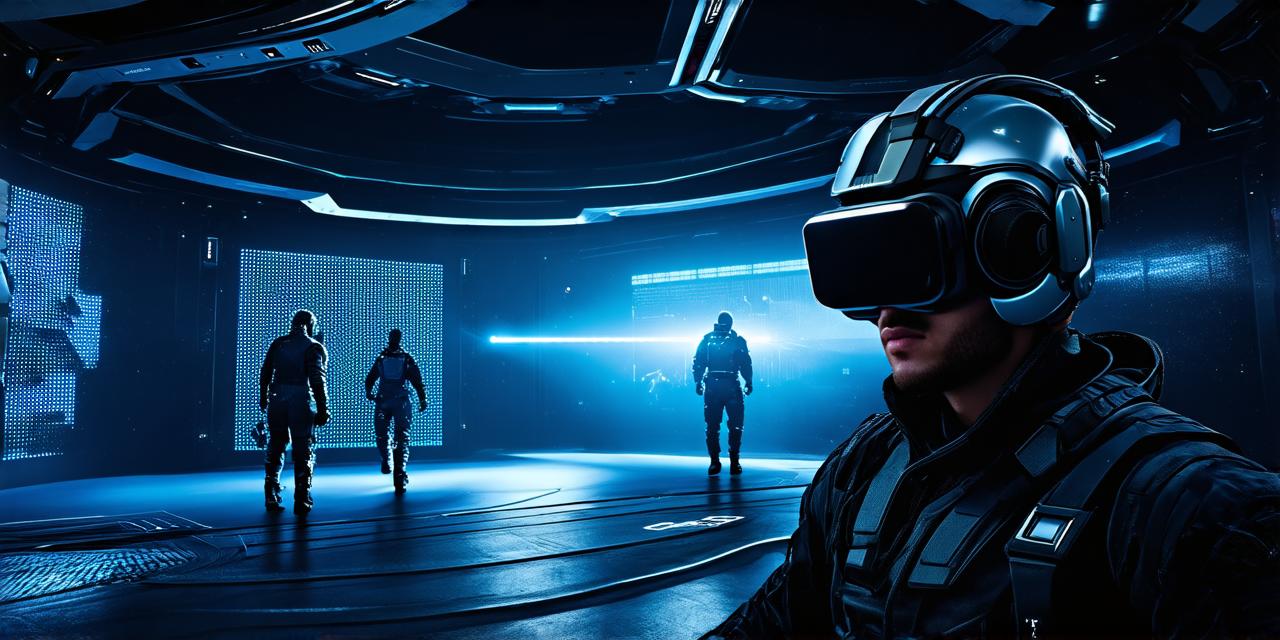<!DOCTYPE html>
Virtual Reality Gaming: A New Era of Interactive Entertainment
Gaming has always been a popular pastime, but with virtual reality, it has taken on a whole new level. With VR headsets, gamers can enter a fully immersive digital world where they can interact with their environment as if they were really there.
This creates a much more engaging and realistic gaming experience than traditional 2D or even 3D gaming.
One example of this is the game “Beat Saber” by Beat Games. In this game, players use virtual reality controllers as light sabers to slash through incoming blocks that represent music beats. The game’s immersive environment and realistic movement make it an incredibly engaging experience, and it has quickly become one of the most popular VR games available.
Another example is “Job Simulator” by Oculus, where users can simulate various jobs such as a chef or a hotel manager in a fully immersive virtual environment.
Virtual Reality Training: Preparing for Real-World Scenarios
Virtual reality is also making a significant impact in training professionals in a variety of fields. With VR, individuals can practice their skills in a safe and controlled environment without the risk of injury or damage to equipment.
This makes it an ideal tool for industries such as medicine, military, and aviation.
For instance, medical students can use virtual reality simulations to practice surgical procedures, allowing them to gain hands-on experience without harming real patients. Similarly, military personnel can use VR simulations to train for combat scenarios, giving them a realistic experience that prepares them for the real thing.
And aviators can use VR simulations to practice flying in a variety of environments, from calm skies to turbulent weather conditions.
Virtual Reality Simulations: Exploring the Unexplorable
One of the most exciting applications of virtual reality is in simulations. With VR, individuals can experience things that they might never have the opportunity to otherwise.
For example, people can take a virtual tour of the solar system, exploring the planets and moons up close. Or they can simulate space travel, experiencing the weightlessness and vastness of space.
One company that specializes in VR simulations is Oculus. Their “Experience Pack” for the Oculus Quest 2 includes a variety of simulations, including a trip to the moon, a ride on a rollercoaster, and even a virtual escape room. These simulations provide an immersive experience that allows individuals to explore new worlds and expand their imagination.
Virtual Reality in Education: A New Frontier
Virtual reality is also being used in education to enhance learning experiences. With VR headsets, students can take virtual field trips to historical sites or scientific wonders without leaving the classroom.
This technology can also be used to create interactive simulations that allow students to practice skills and explore concepts in a safe and controlled environment.
One example of this is the “Anatomy Atlas” app, which allows medical students to explore the human body in 3D using VR headsets. The app provides an immersive experience that allows students to visualize the complex structures of the body and gain a deeper understanding of anatomy and physiology.
Virtual Reality in Accessibility: Making Technology More Inclusive
Virtual reality is also being used to make technology more accessible to individuals with disabilities. For example, individuals with mobility impairments can use VR headsets to experience activities that would be impossible for them to do in the real world, such as skydiving or running a marathon.
Similarly, individuals with autism can use VR simulations to practice social skills and interact with others in a controlled environment.
One company that is using virtual reality to make technology more accessible is “Inclusive Stories”. They have created a series of VR experiences that tell stories from the perspectives of individuals with disabilities, allowing them to share their experiences and raise awareness about disability issues.
Virtual Reality in Mental Health: A New Approach to Treatment
Virtual reality is also being used as a new approach to treating mental health conditions such as anxiety, depression, and PTSD. With VR headsets, individuals can experience realistic simulations of triggering situations and learn coping strategies to manage their emotions and reactions.
One example of this is the “Theravive” app, which uses VR technology to treat phobias and anxiety disorders. The app provides personalized exposure therapy sessions that simulate real-life scenarios, allowing individuals to confront their fears in a safe and controlled environment.
Conclusion: Virtual Reality – A Technology with Endless Possibilities
Virtual reality is a rapidly evolving technology that has the potential to transform the way we interact with the world around us. From gaming and education to accessibility and mental health, virtual reality is opening up new frontiers in a variety of fields. As the technology continues to improve, we can expect to see even more exciting and innovative applications of virtual reality in the future.
